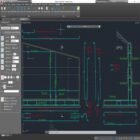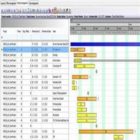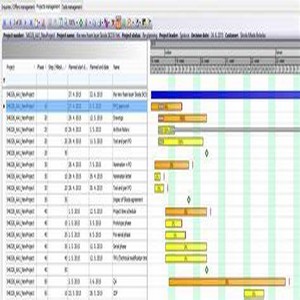
ASTM 2014-code (Complete Set)
DOWNLOAD ASTM 2014 complete code set (True PDF)
ASTM International, formerly known as American Society for Testing and Materials, is an international standards organization that develops and publishes voluntary consensus technical standards for a wide range of materials, products, systems, and services. Some 12,575 ASTM voluntary consensus standards operate globally. The organization’s headquarters is in West Conshohocken, Pennsylvania, about 5 mi (8.0 km) northwest of Philadelphia.
It was founded in 1902 as the American Section of the International Association for Testing Materials (see also International Organization for Standardization).
ASTM International has no role in requiring or enforcing compliance with its standards. The standards, however, may become mandatory when referenced by an external contract, corporation, or government.
Each ASTM standard has a unique serial designation. It is comprised of a capital letter indicating
general classification (A, ferrous metals; B, nonferrous metals; C, cementitious, ceramic, concrete, and
masonry materials; D, miscellaneous materials; E, miscellaneous subjects; F, materials for specific
applications; G, corrosion, deterioration, and degradation of materials; ES, emergency standards; P,
proposals; PS, provisional standards), a serial number (one to four digits), a dash, and the year of issue.
In each serial designation, the number following the dash indicates the year of original adoption as
standard or, in the case of revision, the year of last revision. Thus, standards adopted or revised during the
year 2014 have as their final number, 14. A letter following this number indicates more than one revision
during that year, that is 14a indicates the second revision in 2014, 14b the third revision, etc. Standards
that have been reapproved without change are indicated by the year of last reapproval in parentheses as
part of the designation number, for example, (2014). A superscript epsilon indicates an editorial change
since the last revision or reapproval; ε1 for the first change, ε2 for the second, etc.
If a standard is written in acceptable metric units and has a companion standard written in inch-pound
units (or other units), the metric standard is identified by a letter M after the serial number; this standard
contains “hard metric” units.
If a standard is written in inch-pound units (or other units) and acceptable metric units, the document is
identified by a dual alphanumeric designation.
When reference is made to a standard, the complete designation should be given. Best practice is to
state the designation and title.
The boldface number(s) following the title refer to the volume(s) of the Annual Book of ASTM Standards
in which the standard appears.
This list includes only those standards which appear in the 2014 edition of each volume of the Annual
Book of ASTM Standards. New and revised standards that were approved after the closing date for the
volume are available as separate reprints and will be listed in next year’s edition.
Each ASTM standard is available as a separate reprint from ASTM. Price and order information are
available from ASTM Customer Service, 100 Barr Harbor Drive, West Conshohocken, PA 19428-2959,
610-832-9585.
Construction Literacy
WE REPRESENT THE FUTURE OF THE CONSTRUCTION








